Vincenzo Agnetti at the Cardi Gallery
Simultaneously taking place from June to September across Cardi’s London and Milan galleries, Tempo e Memoria (Time and Memory) is an extensive exhibition dedicated to the Italian conceptual artist, poet, and essayist Vincenzo Agnetti (1926-1981). The show is a continuous spectacle across the two spaces, featuring a comprehensive collection of the artist’s works from 1969 to 1975, which explores poetic reflections on language, time, and memory.
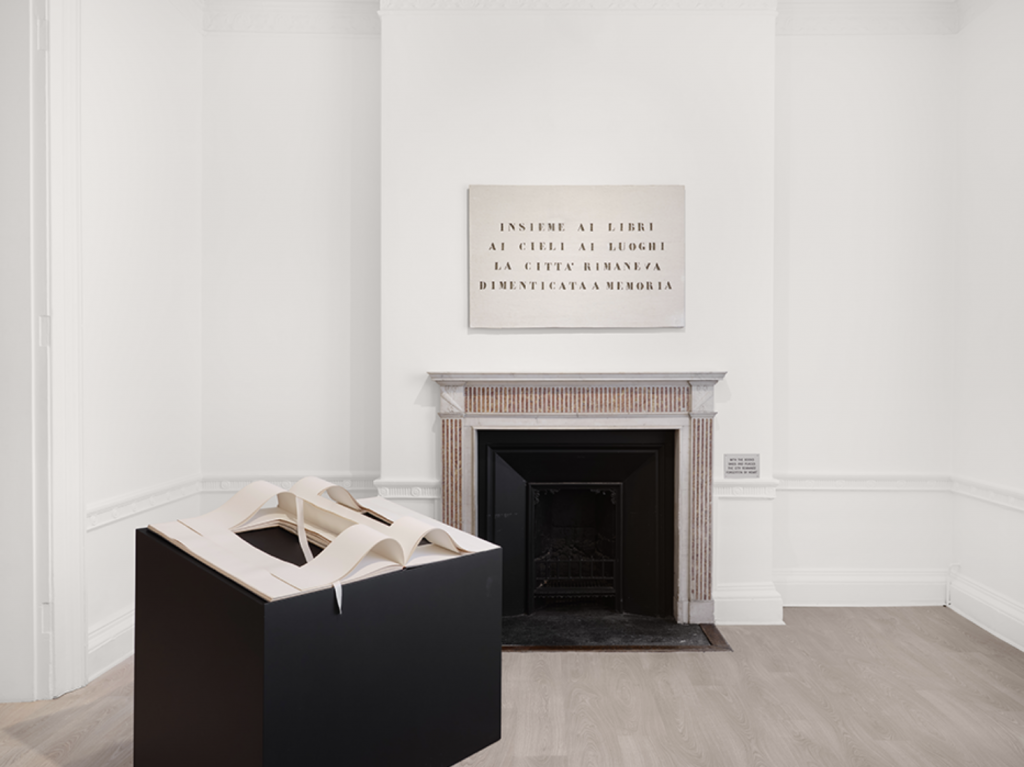
Installation view of Vincenzo Agnetti: Tempo e Memoria, London, Courtesy of Cardi Gallery.
Encompassing all three floors of Cardi’s Mayfair location, the exhibition celebrates Agnetti’s iconic Felts and Axioms alongside rarely-seen installations that reveal his radical exploration of images and text. During the London Gallery Weekend, the show was accompanied by a performance of Elisabetta d’Inghilterra, an experimental component of ‘Static Theatre’ originally staged at the 1976 Venice Biennale.
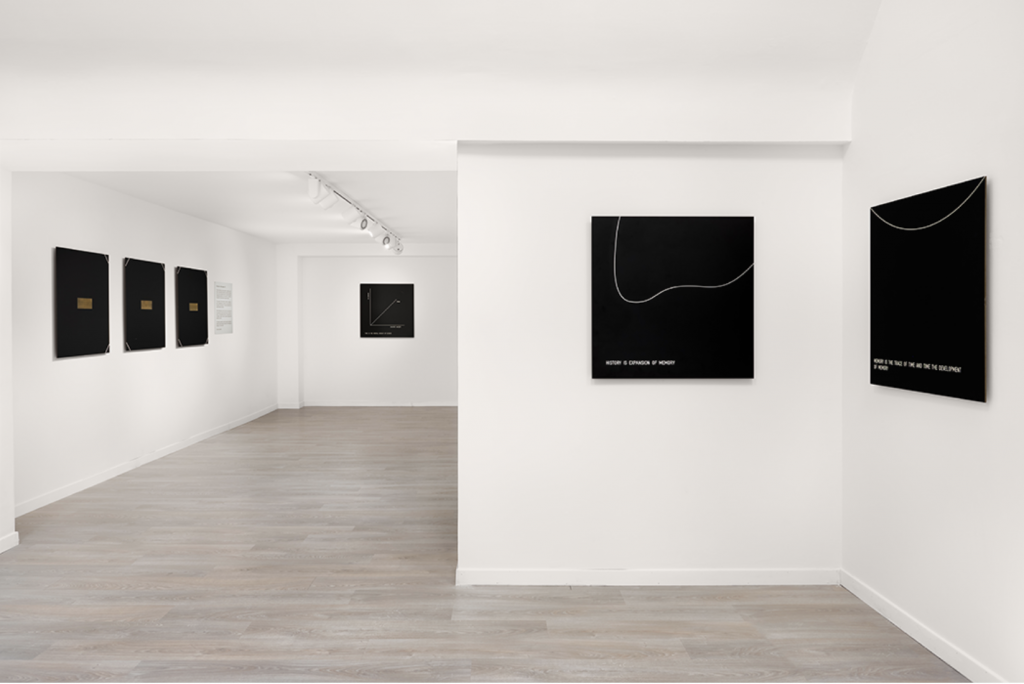
Installation view of Vincenzo Agnetti: Tempo e Memoria, London, Courtesy of Cardi Gallery.
A prominent figure in the Italian Conceptual Art Movement of the 1960s, Agnetti first gained notoriety as a writer and theorist in the Milanese avant-garde. He departed from the conventional painting methods and associated art with the concept of absence, which he explored within a radical and cryptic conceptual framework. He probed on the links between art and language, using it as an artistic medium and critical mode of expression.
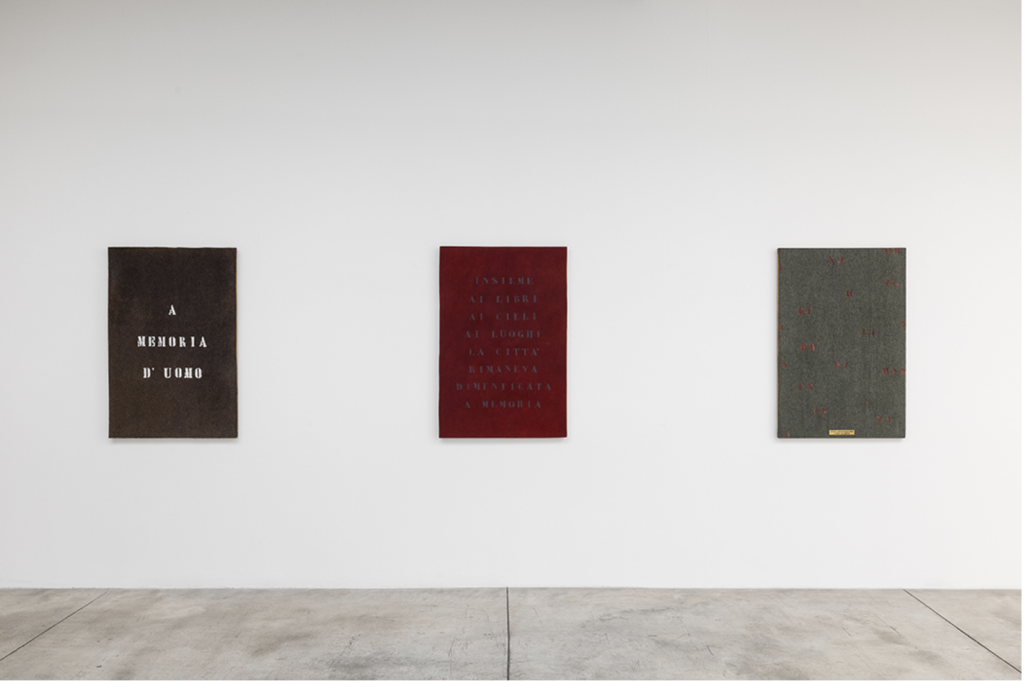
Installation view of Vincenzo Agnetti: Tempo e Memoria, Milan, Courtesy of Cardi Gallery.
Cardi Gallery affirms its dedication to reviving and highlighting the works of the great Italian masters by connecting them to relevant contemporary themes. Focusing on Agnetti’s work from the first half of the 1970s, which is linked to the themes of time, history and memory correlate to the fluid continuation across time and space. With its paradoxical title, his ‘Libro Dimenticato a Memoria’ (Book Forgotten by Heart) pays homage to the contradictory nature of time and language –“what we forget is not lost but becomes part of us and our actions.”
Other notable works include Il Trono, a collaborative piece with Scheggi exhibited in Rome in 1970, and Eventi Precipitano, first presented in Paris in 1975. Visitors can also experience Agnetti’s Elisabetta d’Inghilterra as a static theatre installation in London.
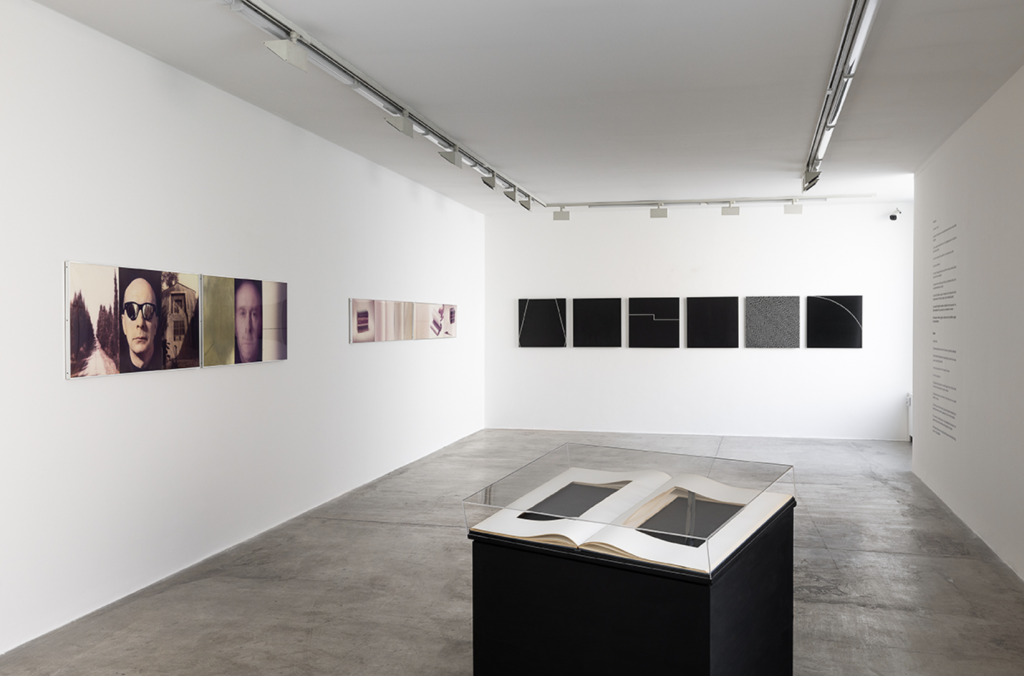
Installation view of Vincenzo Agnetti: Tempo e Memoria, Milan, Courtesy of Cardi Gallery.
In 1962, Agnetti moved to Argentina and declared a self-imposed sabbatical from art production. This period became a critical prelude to his later creative endeavours. Continuing his practice into the 1970s, Agnetti worked prolifically to look into the many possibilities of language for his artistic practice. The material rigour of his works developed an essential link between conceptual art and the emergent Arte Povera movement. Agnetti wrote extensive criticism and analysis of his oeuvre and recognised the limitations of language. He ingeniously harnessed words as a vehicle for creative expression and persistently experimented with their potential to convey meaning.
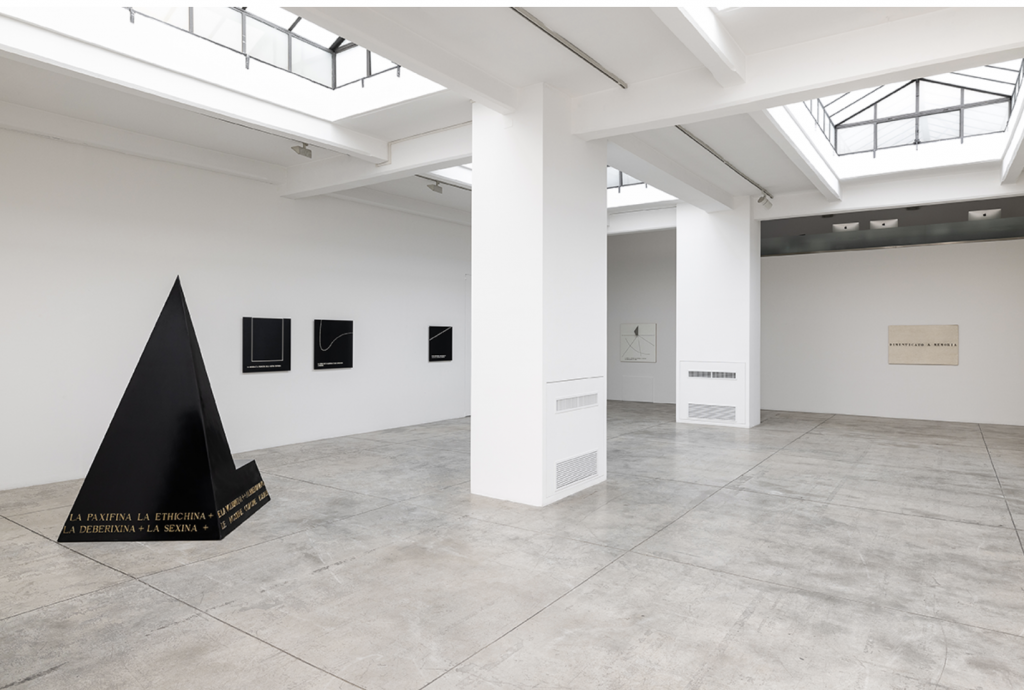
Installation view of Vincenzo Agnetti: Tempo e Memoria, Milan, Courtesy of Cardi Gallery.
The artist had a brief yet highly successful career from 1967 until he died in 1981. He actively participated in his time’s cultural and philosophical dialogues and adeptly incorporated post-war concerns about media, history, and language into his distinctive style.
Cardi Gallery also produced a short film on Vincenzo Agnetti, featuring the artist’s daughter and director of the Estate and Archive, Germana Agnetti:
Vincenzo Agnetti | Tempo e Memoria (Time and Memory) is on view from 3 June to 2 September at Cardi Gallery in London and from 24 May to 1 September at the gallery’s location in Milan.